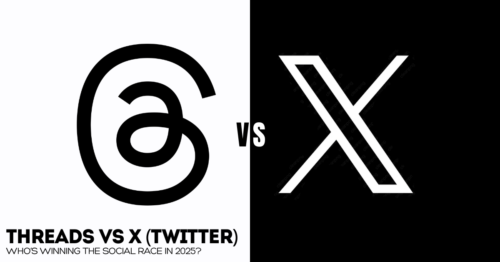The Metaverse is no longer just a sci-fi fantasy—it’s the next digital frontier, and brands that jump in early have a golden opportunity to shape the future of marketing. From virtual storefronts to immersive brand experiences, the Metaverse offers endless possibilities for businesses willing to innovate.
But why should brands care about the Metaverse now? Simple: early movers get the advantage. Just like the first brands to embrace social media (remember when Oreo’s “Dunk in the Dark” tweet went viral during the Super Bowl blackout?), those who establish a presence in the Metaverse today will build loyal audiences, set industry standards, and reap long-term rewards.
In this blog, we’ll explore:
✔ What the Metaverse really is (beyond the hype)
✔ Why early-mover advantage matters
✔ Key marketing opportunities in the Metaverse
✔ Real-world brands already winning in virtual spaces
✔ How your business can get started
Ready to dive in? Let’s go!
What Exactly is the Metaverse? (And Why Should Marketers Care?)
The Metaverse is a persistent, interconnected virtual universe where people interact via avatars, engage in digital economies, and experience immersive environments—all powered by VR, AR, blockchain, and AI. Think of it as the internet, but in 3D, where you don’t just browse—you live inside it.
Why the Metaverse is a Game-Changer for Marketing
- New Audience Engagement – Gen Z and Alpha are digital natives who crave interactive experiences.
- Virtual Commerce (V-Commerce) – Selling digital products (NFTs, wearables) and even real-world items in virtual spaces.
- Brand Storytelling – Instead of ads, brands can create entire worlds (e.g., Nike’s virtual sneaker drops).
- Data & Personalization – Hyper-targeted experiences based on user behavior in virtual environments.
The Metaverse is projected to be worth $800 billion by 2024 (Bloomberg), so brands that ignore it risk falling behind.
The Early-Mover Advantage: Why Acting Now Pays Off
Remember when TikTok was just an emerging app? Brands that joined early (like Chipotle with their #GuacDance challenge) gained massive organic reach before ad costs skyrocketed. The same principle applies to the Metaverse.
Benefits of Being an Early-Mover:
First-to-Market Status – Establish your brand as an innovator.
Lower Competition – Fewer brands = more visibility.
Shaping Trends – Define how your industry operates in the Metaverse.
Loyal Community Building – Early adopters become brand advocates.
Brands like Gucci, Balenciaga, and Coca-Cola are already cashing in—don’t wait until the space is oversaturated!
Top Marketing Opportunities in the Metaverse
1. Virtual Branded Experiences & Events
Imagine hosting a virtual concert (like Travis Scott in Fortnite, which drew 12M+ live attendees) or a product launch in a digital world.
Examples:
- Wendyverse – Wendy’s launched a Meta-restaurant in Horizon Worlds.
- Decentraland’s Fashion Week – Dolce & Gabbana and others showcased digital wearables.
Why It Works:
- Unlimited creativity (no physical constraints).
- Global reach without travel costs.
2. NFT & Digital Collectibles
NFTs aren’t just JPEGs—they’re membership passes, loyalty rewards, and virtual merchandise.
Examples:
- Nike’s .SWOOSH – A platform for virtual sneakers and apparel.
- Starbucks Odyssey – Rewards customers with NFTs for engagement.
Why It Works:
- Drives exclusivity and community.
- New revenue stream (digital asset sales).
3. Metaverse Advertising & Sponsorships
Billboards in virtual worlds, branded mini-games, and influencer partnerships (yes, virtual influencers are a thing).
Examples:
- Coca-Cola’s “Pixel Point” – A limited-edition NFT collectible drop.
- Vans’ Roblox World – A skatepark where users buy virtual Vans gear.
Why It Works:
- Interactive ads > passive banner ads.
- Gamification increases engagement.
4. Virtual Commerce (V-Commerce)
Sell real-world products inside the Metaverse (e.g., trying on digital versions before buying IRL).
Examples:
- Samsung’s 837X – A virtual store in Decentraland.
- Alo Yoga’s Meditation Island – A wellness space promoting real-world products.
Why It Works:
- Blends digital and physical shopping.
- Reduces return rates with virtual try-ons.
5. Corporate Metaverse Spaces (Virtual Offices & Training)
Remote work is here to stay—why not make it more engaging?
Examples:
- Accenture’s “Nth Floor” – A VR onboarding space for employees.
- Meta’s Horizon Workrooms – Virtual meetings in VR.
Why It Works:
- Enhances collaboration.
- Cuts down on real estate costs.
How Your Brand Can Get Started (Without a Huge Budget)
You don’t need a multi-million-dollar VR game to enter the Metaverse. Start small:
- Experiment with NFTs – Launch a limited-edition digital collectible.
- Partner with Existing Platforms – Roblox, Decentraland, or Sandbox.
- Host a Virtual Event – A product demo, AMA, or concert.
- Create a Branded AR Filter – Snapchat or Instagram.
- Engage with Virtual Influencers – Like Lil Miquela or Noonoouri.
Final Thoughts: The Metaverse is Marketing’s Next Big Playground
The Metaverse isn’t just for gamers and tech giants—it’s a new marketing channel with untapped potential. Early movers will define the rules, build loyal communities, and gain a competitive edge.
The question isn’t “Should we join the Metaverse?” but “How soon can we start?”
Follow Us | Our Services | Contact Us







